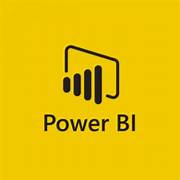
In the age of information, businesses are leveraging data analytics to gain actionable insights and make informed decisions. At the forefront of this data revolution is Microsoft’s Power BI, a powerful business intelligence tool designed to transform raw data into visually compelling and interactive reports. This article explores the capabilities and impact of Power BI in empowering organizations to harness the full potential of their data.
1. Introduction to Power BI: Unleashing the Power of Data
Power BI is a business analytics service by Microsoft that enables users to visualize and share insights from their data in a self-service manner. Whether dealing with large datasets or real-time analytics, Power BI provides a user-friendly interface that allows even non-technical users to create compelling reports and dashboards.
2. Data Connectivity: Bringing Data Together
One of Power BI’s strengths lies in its ability to connect to a diverse range of data sources. From databases and spreadsheets to cloud-based sources such as Azure SQL Database and online services like Google Analytics, Power BI ensures that users can consolidate and analyze data from various platforms seamlessly.
3. Interactive Visualizations: Turning Data into Insights
Power BI transforms raw data into rich visualizations, making it easier for users to understand complex datasets. With a wide array of charts, graphs, and maps, users can create interactive dashboards that tell a compelling data-driven story. This visual approach to analytics enhances comprehension and facilitates more effective decision-making.
4. Real-Time Analytics: Staying Current in a Fast-Paced World
In the business landscape, timeliness is often key. Power BI enables real-time analytics, allowing users to monitor changes and trends as they happen. This feature is particularly valuable for businesses that need to react swiftly to market dynamics, ensuring that decisions are based on the most up-to-date information.
5. Power Query and Data Transformation: Shaping Data to Fit Needs
Power BI incorporates Power Query, a data connectivity and preparation tool. Power Query enables users to transform and shape data from various sources, ensuring that it is clean, relevant, and ready for analysis. This capability empowers users to work with data in its most useful form.
6. Sharing and Collaboration: Fostering a Data-Driven Culture
Power BI is not just about individual analysis; it’s about sharing insights across teams and organizations. The platform facilitates collaboration by allowing users to share dashboards and reports securely. This collaborative approach fosters a data-driven culture within organizations, ensuring that insights are accessible and actionable across departments.
7. Integration with Microsoft 365: Seamlessly Connected Workflows
Power BI integrates seamlessly with the Microsoft 365 suite of applications. This integration allows users to embed reports directly into Microsoft Teams, Excel, or SharePoint, creating a unified and connected workflow. Users can access Power BI reports within familiar applications, enhancing efficiency and promoting a cohesive user experience.
Conclusion:
In conclusion, This is stands as a transformative tool in the realm of business intelligence. By democratizing data analytics, Power BI empowers organizations to make data-driven decisions at all levels. As businesses navigate the complexities of a data-driven world, Power BI remains a catalyst for innovation, efficiency, and success, transforming raw data into valuable insights that drive tangible results.